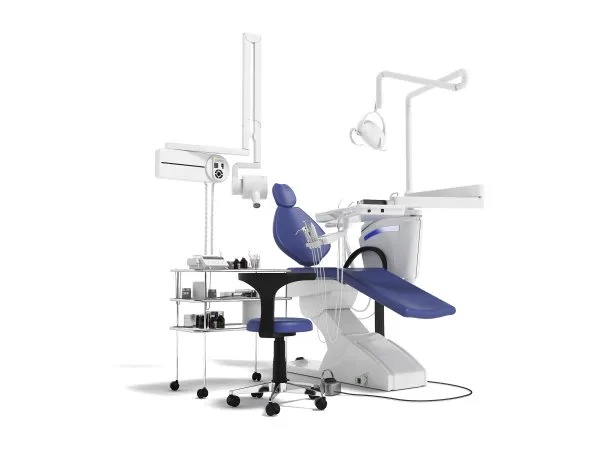Essential Guidelines to Ensure Safety During Root Canal Treatment for Optimal Outcomes and Patient Comfort
Summary: Root canal treatment is often perceived as a daunting procedure due to its complexity and the common myths that surround it. However, by following essential guidelines, dental professionals can ensure a safe and comfortable experience for patients, ultimately leading to optimal outcomes. This article outlines four critical aspects to consider during root canal treatment: proper diagnosis and treatment planning, the importance of sterile techniques, patient management strategies, and the use of advanced technology. Each aspect plays a significant role in enhancing patient comfort and treatment efficacy, allowing practitioners to dispel common misconceptions and reinforce the value of root canal procedures.
1. Thorough Diagnosis and Treatment Planning

The cornerstone of successful root canal therapy lies in a comprehensive diagnosis and meticulous treatment planning. Dentists must obtain an accurate patient history and perform a detailed clinical examination to ascertain the extent of the infection or damage to the tooth. Diagnostic imaging, such as X-rays or cone beam computed tomography (CBCT), provides crucial insights that aid in developing an effective treatment strategy.
Once a definitive diagnosis is established, treatment planning should include a step-by-step approach tailored to the individual patient’s needs. This involves considering factors such as the tooths location, the complexity of the root canals, and any previous dental treatment history. By customizing the treatment plan, dental professionals can anticipate potential challenges, thereby enhancing the overall safety and success of the procedure.
Communicating the treatment plan with the patient is paramount. Patients should be informed about the process, expected outcomes, and possible complications. This transparency helps in alleviating anxiety and ensures that patients are involved in their treatment journey, further endorsing a positive clinical experience.
2. Maintaining Sterility Throughout the Procedure
Infection control is critical during root canal treatment to minimize the risk of post-operative complications. Maintaining a sterile environment should begin prior to the procedure. Dental professionals must utilize appropriate personal protective equipment (PPE) and ensure that all instruments are properly sterilized. A clean working space not only sidesteps potential infections but also reassures patients of their safety.
During the procedure, it is essential to isolate the treatment area, usually achieved by using a rubber dam. This isolation prevents contamination from saliva and enhances the visibility of the working field. Furthermore, meticulous attention to hygiene must be maintained throughout the treatment to avoid cross-contamination between instruments and the patient’s oral cavity.
Finally, thorough disinfection of the root canal system during treatment is vital. Utilizing effective antiseptics and irrigants can help eliminate bacteria from the pulp chamber and root canals. This step significantly reduces the chances of reinfection and promotes a successful healing process, ensuring optimal outcomes for the patient.
3. Effective Patient Management Techniques
Managing patient anxiety and discomfort is essential in root canal therapy. Many patients enter the treatment room with preconceived fears, often rooted in past experiences or misconceptions. Creating a calming environment can significantly enhance the patient’s comfort levels. Simple measures, such as playing soothing music or allowing a supportive friend or family member to accompany the patient, can help alleviate stress.
Furthermore, explaining the procedure in non-technical terms helps demystify the process and fosters trust between the patient and the dental team. Dentists should encourage questions and provide thorough answers, ensuring that patients feel informed and empowered regarding their treatment.
Utilizing effective pain management strategies is also crucial. Local anesthesia should be administered appropriately, with options for sedation available for particularly anxious patients. Post-operative care instructions must be clearly communicated, equipping patients with the knowledge they need to manage any discomfort effectively after the procedure.
4. Utilizing Advanced Technology for Enhanced Safety
Advancements in dental technology have revolutionized root canal treatment, contributing to improved safety and outcomes. The use of digital imaging, such as 3D cone beam scans, provides comprehensive views of the tooths anatomy, allowing for accurate diagnosis and efficient treatment planning.
Laser technology is another advancement that enhances patient comfort by reducing the need for traditional drills. Lasers can effectively disinfect the canal and minimize tissue trauma, often resulting in a more comfortable experience for patients. This technology, paired with traditional methods, can significantly improve outcomes while ensuring the patient’s safety and comfort.
Additionally, utilizing electronic apex locators helps in determining the length of the root canal with precision, minimizing the risk of over-preparation. Delving into these technological enhancements not only increases the safety of the treatment but also boosts the overall efficiency, making the process smoother for both practitioners and patients.
Summary:
In conclusion, ensuring safety during root canal treatment is essential to achieving optimal outcomes and enhancing patient comfort. By emphasizing thorough diagnosis and treatment planning, maintaining stringent sterilization protocols, employing effective patient management techniques, and embracing advanced technologies, dental professionals can transform the perception of root canal procedures. This holistic approach not only reduces anxiety but also ultimately leads to successful treatment results.
This article is compiled by Vickong Dental and the content is for reference only.



